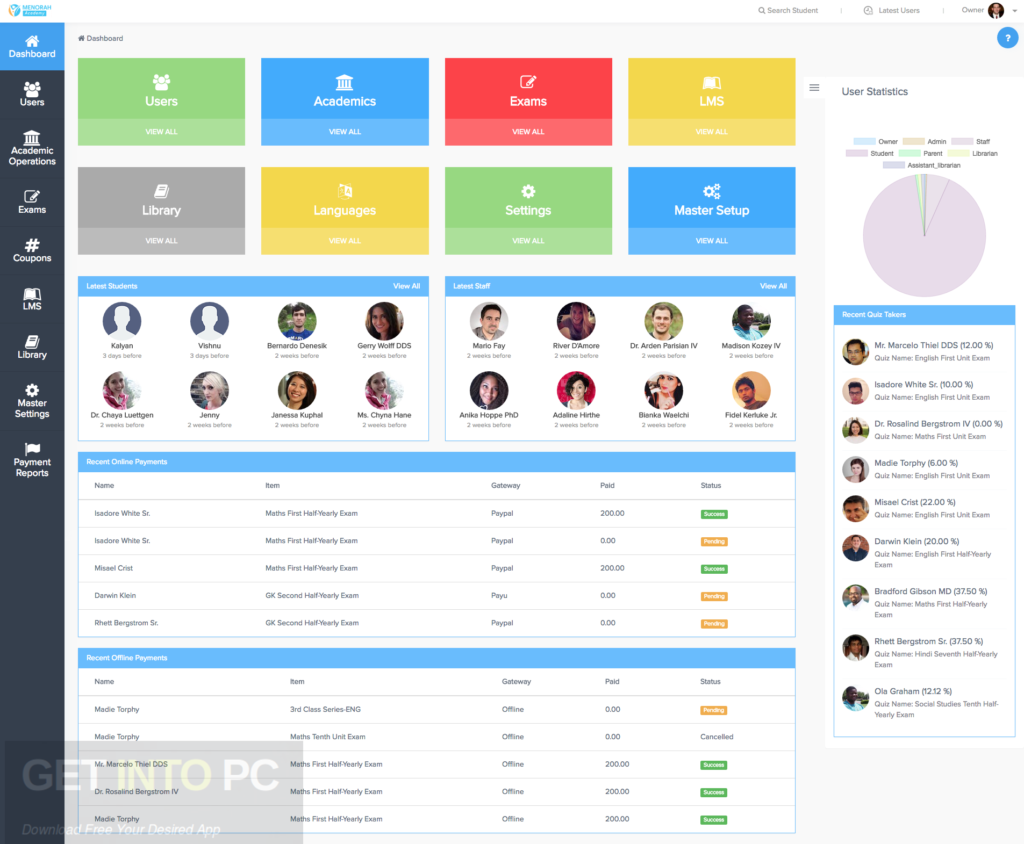
Software undertaking administration is more than just a easy artwork and science of managing and supervising software program tasks. Additionally it is a sub-field of undertaking management the place software program initiatives are supervised, developed, managed and managed. It encompasses many areas comparable to software requirements, estimation, design, testing, feedback, documentation, concurrency, maintenance, deployment and testing. Software program project administration (SPM) is used to track and control software development initiatives by means of a systematic strategy.
Software challenge management software has developed over time to develop into a true venture management software. It can be defined as a mannequin that provides work orders for work gadgets, schedules for work cycles, and resource requirements at all stages of software program development. Continued of a software management software program include work orders, work cycles, and resource necessities. The project supervisor screens and controls the method and ensures that targets are met.
A well-applied software management system will provide work orders which are properly outlined, accurate, and up-to-date. Learn Even more Here may even enable crew members to coordinate their tasks in accordance with the defined workflows. Workflows are predefined steps that work members are expected to comply with within the completion of tasks.
There are numerous components that contribute to successful software program project management. Workforce work is one of these components. more helpful hints allows software projects to be accomplished in a timely manner. With a well-implemented software program administration system, it is easy for challenge groups to speak and work together effectively. view site… can be achieved with proper feedback mechanisms.
Resource administration is one other vital issue that contributes to the success or failure of a software program product development undertaking. Proper resource administration requires adequate sources to carry out work duties. These sources may embody human capital, expertise sources, and different types of belongings.
Varied duties may be carried out simultaneously. When duties are carried out at the identical time, the probability of meeting deadlines increases. Delays can also happen if there are insufficient sources to perform duties. For example, if there should not sufficient workers to carry out essential tasks, the manufacturing timeframe may increase. Similarly, if there are insufficient know-how sources, the overall time-frame of the challenge may increase because of the need to hire know-how personnel to perform numerous tasks. The need for short-term workers and expertise expertise additionally increases the probability of delays and issues.
One other factor that contributes to the success of an agile undertaking administration approach is the number of an applicable strategy sprint. An agile strategy sprint improves the agility of a software program improvement organization by enabling the group to change its business model rapidly and efficiently as necessary. Software program challenge administration requires planning and the collection of an appropriate strategy sprint. Suggested Web site require that the selected sprints should be appropriate with the organizational objectives and goals.
Finally, mission managers should ensure that each one adjustments are reviewed and authorised based on the change management process before shifting on to the next milestone. All agreed upon modifications ought to be included within the corresponding change requests. Change requests are controlled by the software configuration management (SCM) instruments. SCM is designed to make sure that every change is reviewed, analyzed, commented on, and carried out in response to the unique specifications and the business wants.
As well as, the everyday software program engineering challenge supervisor may also need to know the requirements of the mission stakeholders. Typically, the software engineering supervisor will put together requirements lists that describe the software program elements required for the answer. The software program undertaking supervisor may then engage the stakeholders in a process where they outline the scope of labor, talk about design alternatives, and decide if the answer satisfies their necessities. Agile approaches maximize this involvement by utilizing step-oriented course of improvement methods that enable stakeholder communication to happen throughout the challenge. Stakeholders are also given the chance to assessment the requirements during each step of the project.
The following step within the Agile methodology involves functional description and estimation. Purposeful description describes the business downside or requirement, the specification, and the necessities needed to solve the issue. The software measurement and scope administration device used determines the software necessities and the size and scope of the technical group. visit the following page and estimation are based mostly on several components including the assumption of a single occasion of the problem, the maximum number of instances which will happen within one project, the whole time required to resolve the issue, and the danger management technique.
The final step in the Agile methodology involves testing and integration. This step addresses the actual testing of the software program and code; and any adjustments which might be obligatory as well as the combination of latest processes, hardware, or software program into the existing ones. Most testing is completed through the publish-iteration part and integration occurs whereas the testing continues to be in progress. The goal of Agile is to make the sprints as short as possible, thereby enabling fast delivery. Though Agile has some adverse impacts on administration time wanted for submit-iteration evaluation and implementation, it has been successful in decreasing value by decreasing schedule threat, rising pace by higher testing and reuse, and improving quality by eliminating defects.